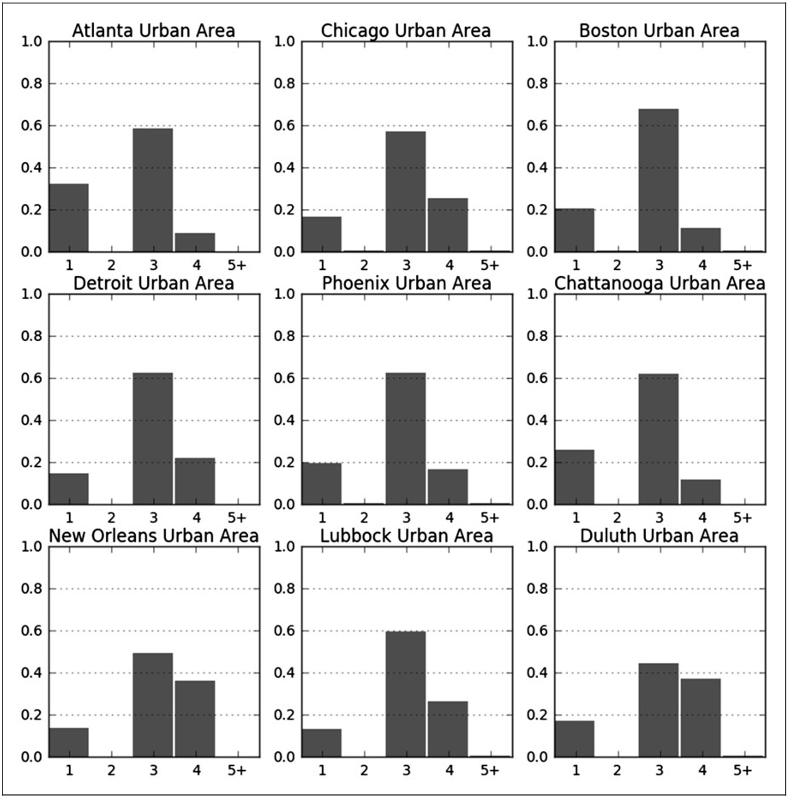




Did you find this useful? Give us your feedback















477 citations
203 citations
60 citations
17 citations
...Boeing (2017a) furthermore shows that statistics of network measures significantly change when the scale of study switches from neighborhood to cities and metropolitan areas....
[...]
...Recent tools such as the one proposed by Boeing (2017b) provide algorithms to operate an extraction of network topology....
[...]
9 citations
...Shannon entropy indicates that the more types of things there are and the more equal each type’s proportional abundance is, the less predictable the type of any single object will be (Boeing 2018b)....
[...]
...Network science provides a lens to explore structure through connectivity (Jiang 2016; Boeing 2017, 2018a; Turnbull et al. 2018)....
[...]
...Boeing (2018b) adapts entropy measures to analyze urban spatial order through street orientations....
[...]
18,415 citations
17,647 citations
...…OSMnx-calculated measures are discussed here, but extended technical definitions and algorithms can be found in e.g. (Albert and Barabási, 2002; Barthelemy, 2011; Brandes and Erlebach, 2005; Costa et al., 2007; Cranmer et al., 2017; Dorogovtsev and Mendes, 2002; Newman, 2003, 2010; Trudeau, 1994)....
[...]
14,696 citations
...Finally, PageRank ranks nodes based on the structure of incoming links and the rank of the source node (Agryzkov et al., 2012; Brin and Page, 1998; Chin and Wen, 2015; Gleich, 2015; Jiang, 2009)....
[...]
10,567 citations
...…OSMnx-calculated measures are discussed here, but extended technical definitions and algorithms can be found in e.g. (Albert and Barabási, 2002; Barthelemy, 2011; Brandes and Erlebach, 2005; Costa et al., 2007; Cranmer et al., 2017; Dorogovtsev and Mendes, 2002; Newman, 2003, 2010; Trudeau, 1994)....
[...]
3,551 citations
...Such measures extend the toolkit commonly used in urban form studies (Ewing and Cervero, 2010; Talen, 2003)....
[...]
This study hasmade all of these network datasets—for 497 urbanized areas, 19,655 cities and towns, and 6857 neighborhoods—along with all of their attribute data and morphological measures available in an online public repository for other researchers to study and repurpose.